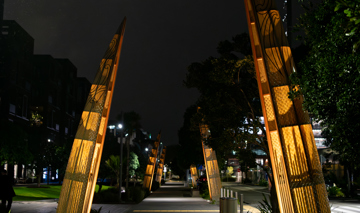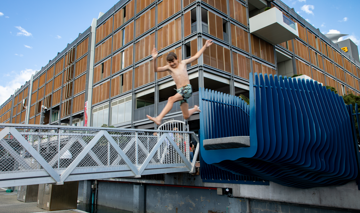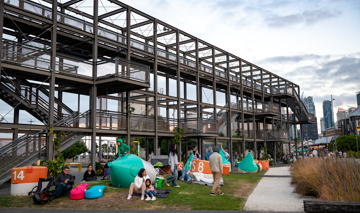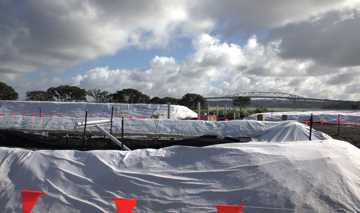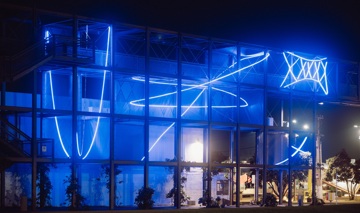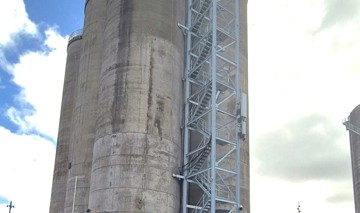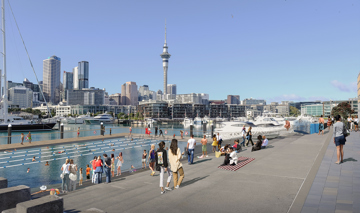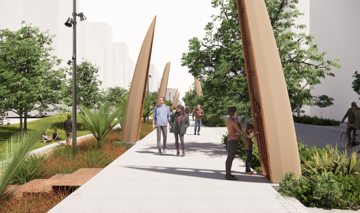Waka Moana artistry meets technology in the Wynyard Quarter
07 October 2025
- Wynyard Quarter
- News
- Mana Whenua
- Sustainability
- Urban regeneration
Wynyard Quarter artwork Waka Moana blends Māori artistry with contemporary technology.
Vision for a continuous network of publicly accessible green spaces moves one step closer with the arrival of new artwork Waka Moana.
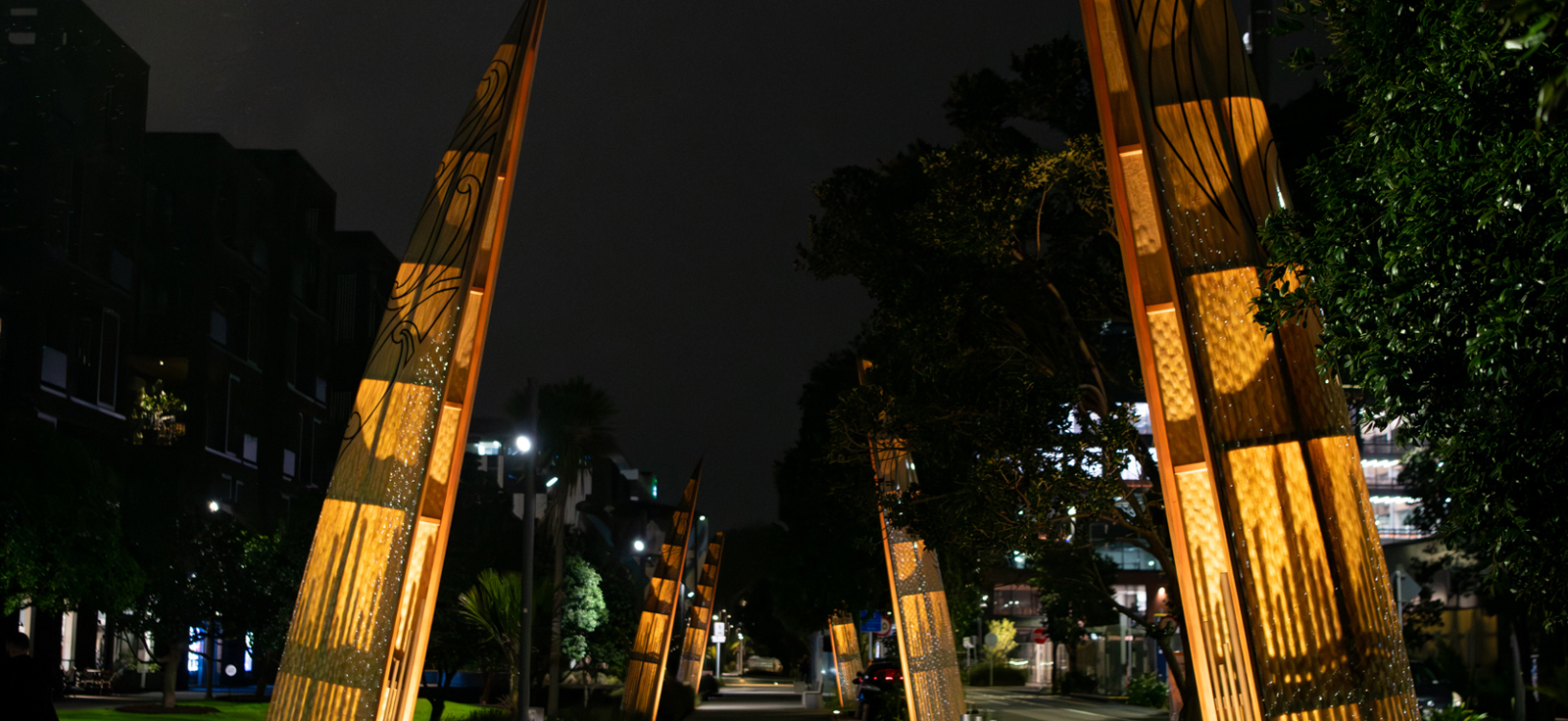
Vision for a continuous network of publicly accessible green spaces moves one step closer with the arrival of new artwork Waka Moana.
Prepare to be drawn closer to the region’s maritime history. A new artwork in Wynyard Quarter evokes stories of Māori voyagers sailing across Te Moana-nui-a-Kiwa (the Pacific Ocean) centuries ago, before landing on the shores of Tāmaki Makaurau.
Set along the Daldy Street Linear Park, new public artwork Waka Moana is now in place for people to enjoy.
The new artwork is part of a wider vision to form a continuous network of publicly accessible green spaces across Auckland’s city centre and waterfront, improving access to nature and the harbour for thousands of Aucklanders and visitors.
This network from the city centre to the waterfront has been a focus of Auckland Council investment, taking its lead from the publicly consulted City Centre Masterplan. Investment in high quality, appealing public space like this across the city also helps drive visitor numbers and help catalyse further private sector investment in residential, commercial and retail developments.
Created in partnership with mana whenua and designed by lead artist Graham Tipene (Ngāti Whātua Ōrākei, Ngāti Kahu, Ngāti Hine, Ngāti Hauā, Ngāti Manu), the artwork features nine six-metre waka-shaped sculptures, 1.3 metres at the base. Tipene collaborated with master waka builder Hine Waitai Dye, lead designers LandLAB, and contributing artists.
The striking hulls are placed vertically in the rain gardens on the eastern side of Daldy Street in a taratara-a-kae (zig-zag) formation, creating an immersive experience along the pedestrian pathway.
There are two hull shapes – five waka hourua representing the double-hull, ocean-going vessels that navigated the Pacific and beyond and four waka tētē depicting localised vessels used for transport and fishing. Inside the nine waka are taonga (precious items) which refer to traditional stones used for anchoring waka known as punga.
Artist Graham Tipene explains that public art like this helps us remember the past, while looking to the future.
“The inspiration and thinking behind Waka Moana was to give people an experience as they enter the space. We wanted to create a feeling of awe for the public, and also to show the historic cultural elements of Wynyard Quarter. There was a massive boat building / waka culture here and I wanted to bring those ideas back to the space,”
Artist
Graham Tipene
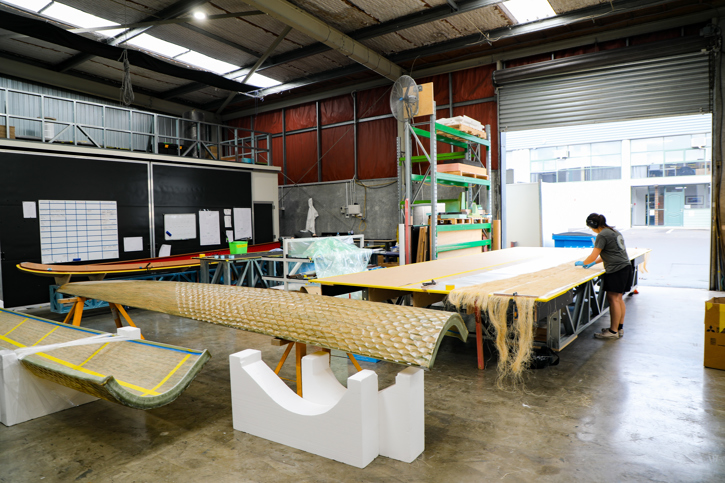
This powerful mahi toi (artwork) was brought to life with the help of architectural rigging experts SRS Group in collaboration with council’s Auckland Urban Development Office, Public Art team, and landscape architecture and urban design experts LandLab.
Councillor Angela Dalton says: “Waka Moana reflects this city’s proud maritime heritage – from Māori explorers who landed here centuries ago to our contemporary marine industry.
“I am proud that Auckland Council partners with mana whenua within our urban design projects in this way. Congratulations and gratitude from all of us to Graham Tipene and his team for this beautiful new walkway in our city.”
Fiona Knox of Auckland Council’s Auckland Urban Development Office explains that Waka Moana offers a stunning new visual experience for Aucklanders and visitors. “This deeply meaningful, beautifully crafted artwork helps to strengthen our sense of place. We hope visitors will experience this artwork as a place for reflection and connection to our valued Te Waitematā. With its scale and its innovative design, we expect this mahi toi to attract both local and international interest.”
Emily Trent Auckland Council Head of Arts and Culture speaks about the importance of art in the design of public spaces and connection to heritage and culture. “Our city becomes more authentic and vibrant whenever we bring public art of this quality to our streets and spaces; art that is uniquely Tāmaki Makaurau”.
Waka Moana symbolises the connection between Auckland’s vibrant waterfront with its maritime history and the cultural heritage of mana whenua, another step in replenishing the mauri (life essence) throughout Te Waitematā and the surrounding landscape.
Mana whenua project partners aspire to see the mauri of our moana (sea) and whenua (land) enhanced; to build a resilient, vibrant, attractive waterfront that communities will continue to appreciate, today and into the future.
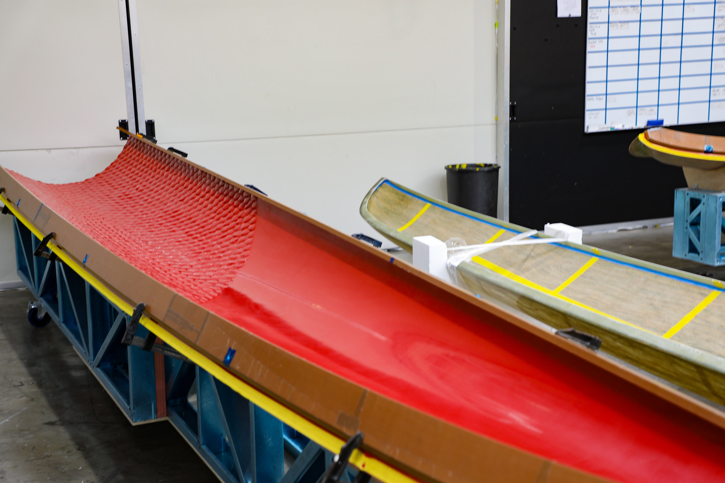
Six of the taonga inside the hulls were designed by Ngāti Whātua artists Caine Toatahi Taihia and Uira Nahi, with a further three designed by Ngāti Tamaoho artists Ted Ngatakai and Maaka Potini.
Protecting the lower third of each hull are representations of pā tūwatawata (defensive fencing), evoking the early settlements and numerous pā sites that once stood in the area.
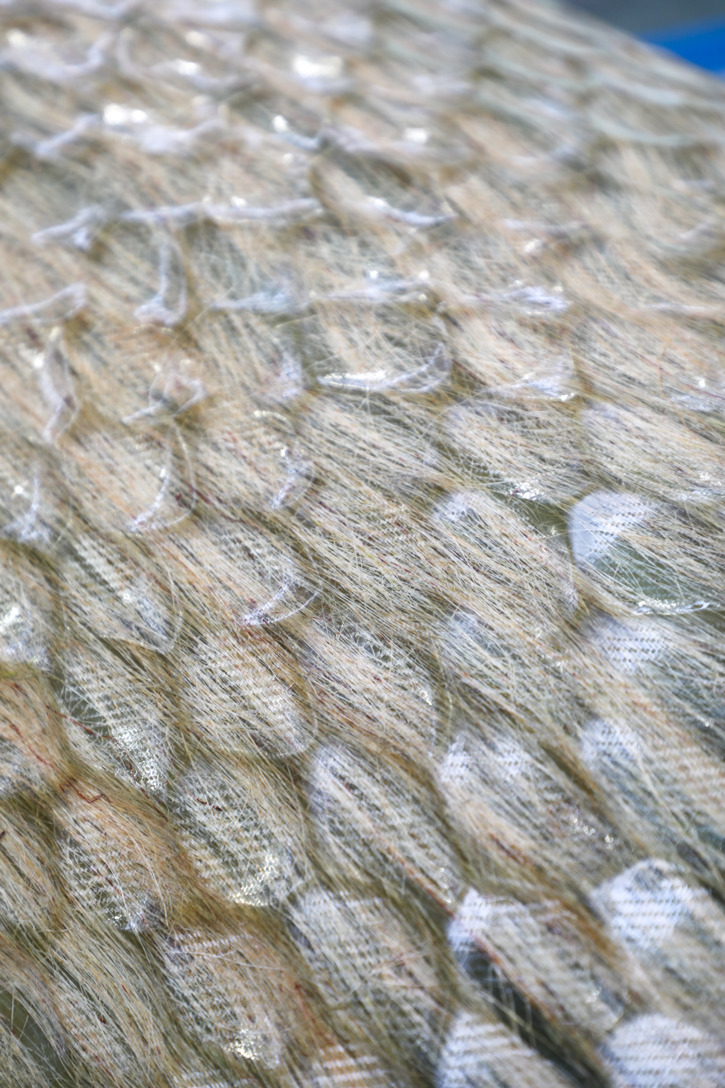
The hulls feature patterns including whao roa (toki adzed patterns), traditionally applied to help waka move efficiently through water.
On the upper sections of each waka, three styles of pūhoro (tā moko) motifs were applied symbolising speed, agility, and movement.
Graham Tipene invited fellow Wynyard Quarter-featured artist Janine Williams (Ngāti Pāoa, Ngāti Whātua ki Kaipara) to create the pūhoro motif for the final waka.
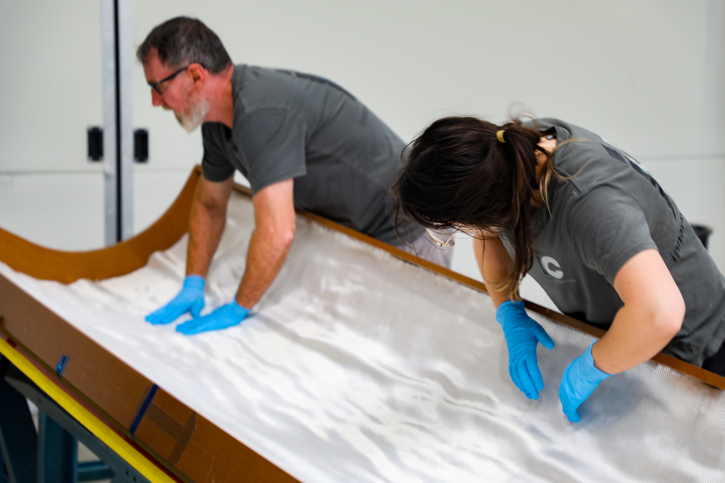
Each of the nine towering waka hulls is made using a fusion of traditional and contemporary techniques.
Muka-infused fibreglass reinforced plastic is carefully laid into custom moulds, heated, and lifted out to form the hulls.
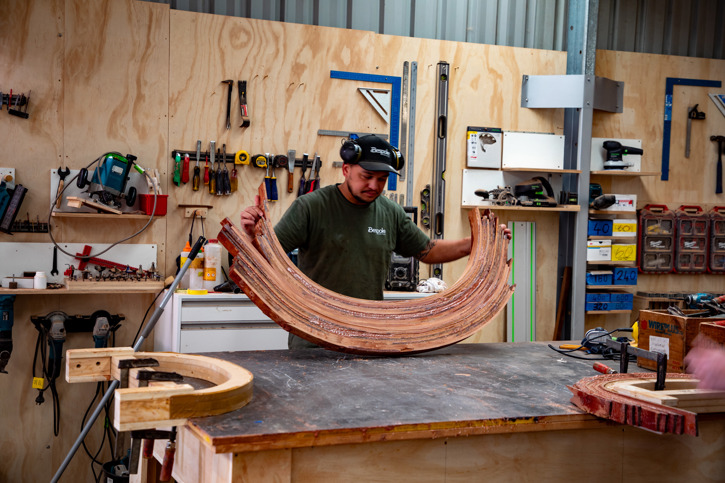
The addition of tōtara timber bulkheads and ribs further enhanced the cultural narrative and craftsmanship behind the installation.
To form the ribs thin layers of totara timber were carefully glue-laminated.
It’s a delicate process, with each curve held gently for a day before being glued and refined.
Waka Moana forms a powerful tribute to the maritime traditions of Tāmaki Makaurau, enriching the city’s public art collection and reaffirming an enduring Auckland Council commitment to Māori expression in the city’s urban landscape.









